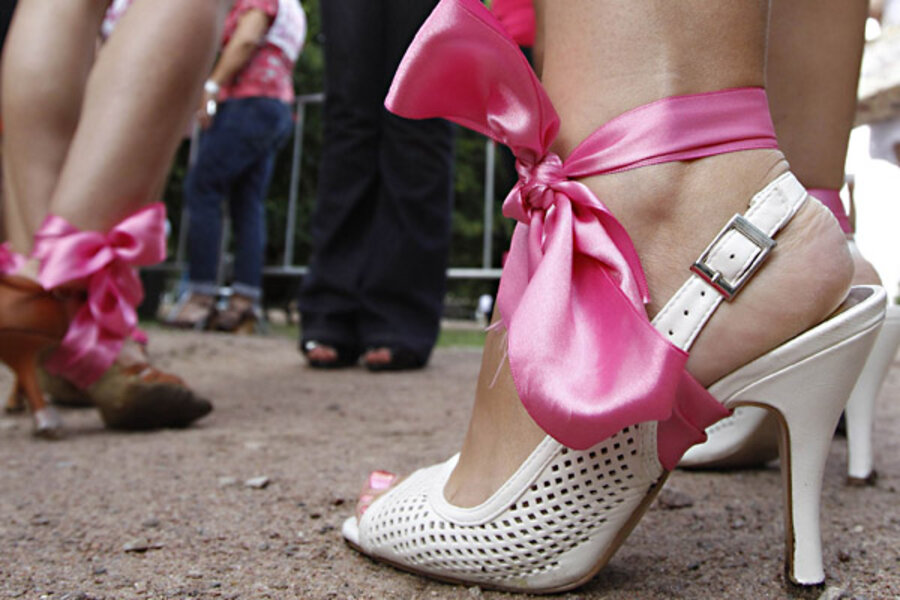A tax on high heels?
Loading...
Among my idiosyncracies are two footwear anti-fetishes: I hate flip flops and high heels. I have never mastered the dark art of walking in flip flops, and I have always been troubled when women teeter at the edge of falling because of shoes designed for fashion (allegedly) rather than function.
Nonetheless, I enjoyed Thursday’s Wall Street Journal piece about the engineering, some would say architecture, of contemporary high heels. I was also pleased that columnist Christina Binkley emphasized some of the negatives early in her piece:
High heels can exact a heavy toll on the body, pushing weight forward onto the ball of the foot and toes and stressing the back and legs. Most doctors recommend a maximum height of 2 inches.
But with heels, many women trade comfort for style. Women spent $38.5 billion on shoes in the U.S. last year, according to NPD Group, and more than half of those sales were for heels over 3 inches high. High heels are seen as sexy and powerful. Stars on the red carpet clamor for the highest heels possible–leading designers who want their shoes photographed into an arms race for height.
That “arms race” comment got me to thinking. Perhaps there’s an externality here? Are women trying to be taller than other women? If Betty has 2 inch heels, does that mean Veronica wants 2 and a half inch heels? And that Betty will then want 3 inch heels? If so, high heels are an example of the kind of pointless competition that Robert Frank highlights in his recent book, “The Darwin Economy“. As noted in the book description:
[Such] competition often leads to “arms races,” encouraging behaviors that not only cause enormous harm to the group but also provide no lasting advantages for individuals, since any gains tend to be relative and mutually offsetting. The good news is that we have the ability to tame the Darwin economy. The best solution is not to prohibit harmful behaviors but to tax them. By doing so, we could make the economic pie larger, eliminate government debt, and provide better public services, all without requiring painful sacrifices from anyone.
Hence today’s question: Are high heels an example of such misguided competition? If so, should we tax them? (Bonus question: Should we tax noisy flip flops?)
P.S. The book description is not correct about the absence of “painful sacrifice.” Someone out there will still purchase such goods (otherwise there would be no revenue to ”eliminate government debt”), and there’s a good chance they will view their tax payments as a sacrifice.








